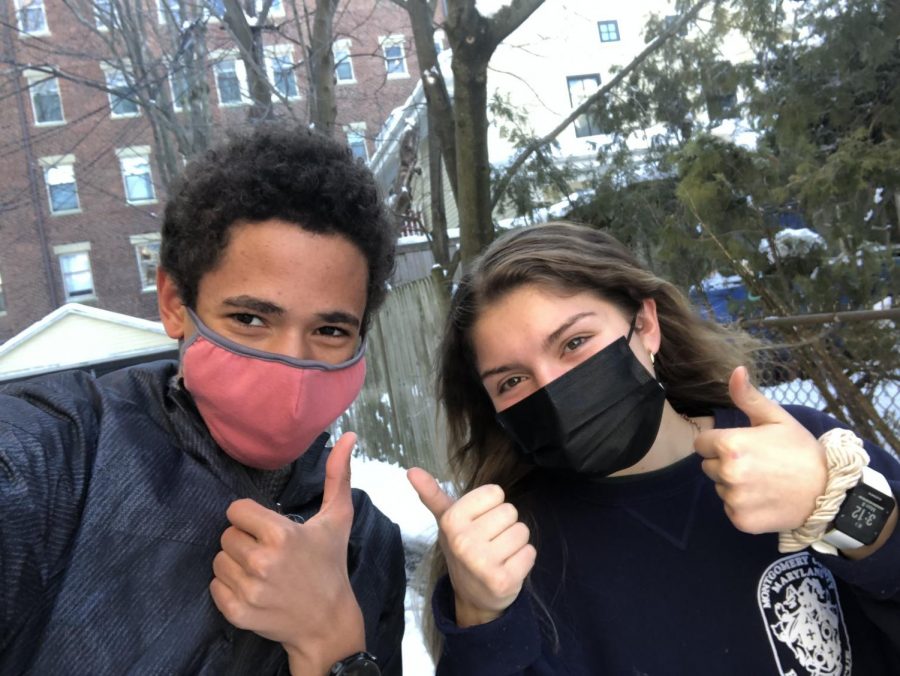School Committee Planning and Decisions Around In-Person Learning
Representatives to the School Committee Anais Killian and Nuriel Vera-DeGraff have observed the laborious path to a hybrid learning model.
February 26, 2021
Governing the Cambridge Public Schools is a challenging task—especially during the times of COVID-19 and such uncharted legislation. In the Cambridge Public Schools (CPS) district, the School Committee is the elected governing body with six out of seven of its members elected biennially, and the Mayor of Cambridge as its Chair. As stated in the Official Policy Manual, this body “is responsible for the development of policy as guides for administrative action and for employing a Superintendent who will implement its policies,” and is also “responsible for establishing educational objectives that will guide the School Committee and the staff goals.” In the context of the COVID-19 pandemic, the Cambridge School Committee and Superintendent, Kenneth Salim, have been charged with answering the ultimate question during these times: When are we going back to in-person school? And how?
To more clearly understand the School Committee’s position in CPS, an analogy can be made between the district and the federal government—the School Committee is akin to Congress, while the Superintendent and their cabinet is similar to the president and their administration. Just like Congress, the School Committee has legislative power, and the ability to remove the Superintendent, if necessary. However, most of the day-to-day responsibilities in CPS are reserved for the individual school administrations (principals, vice principals, etc.) and to the superintendent. For example, it is Principal Smith who decides the CRLS schedule and what classes go where, not the School Committee.
Since March of 2020, the pressure on the School Committee has skyrocketed as the board has been tasked with ensuring the continuation of valuable education through the COVID-19 pandemic. Since the moment it was clear that most students would not be returning to school in-person through the end of School Year 2019-2020, the School Committee has been working alongside scientific advisors, the superintendent and his cabinet, families, educators, and school administrators to both improve the quality of remote learning and to figure out how to safely get students learning back in-person. This culminated in students (mostly in Pre-K through 3rd grade) receiving the option to return in-person on October 13th. In addition, students in high school were granted the ability to have sports throughout this time, with certain modifications made to the sports schedule.
Currently, the School Committee is preparing for a district-wide expansion of in-person learning starting on March 1st. During February 2nd’s Regular Meeting, Superintendent Salim shared a presentation which contained extensive data about school-specific enrollment. For CRLS, 637 students have signed up (and therefore will have the option) to go back in-person March 1st, although this number is subject to change. There will be two cohorts—dividing the full number of students in half—that will attend every other week in-person.
Now, how will there be just over 300 students learning in-person at a time, while the majority of the student body learns at home? In some CPS schools (CRLS, for example), administrations are planning a concurrent—or simultaneous—model, which will combine those learning in-person with those learning online. Although many details have yet to be finalized, in-person learners will ultimately be engaging and participating with remote learners via Zoom. While this model may sound strange, it is currently a popular hybrid model for many schools around the country.
It is critical to understand that while many students, teachers, and community members are looking forward to the expansion of in-person learning on March 1st, there are many who feel that throughout this process their perspectives have not been valued sufficiently. Certain stakeholder groups believe that the School Committee and the superintendent have not done enough to include them in the conversation, making past and current plans not reflective of their needs and wants. This culminated in the Cambridge Education Association (the CEA, or the teachers’ union of Cambridge, which is composed of 1,500 educators) taking a vote of no confidence for the School Committee and the Superintendent. This means that the School Committee and the Superintendent’s cabinet are not reflecting what many educators want to see when it comes to decisions around the plans for improving remote learning and the expansion of in-person learning. It is important to note that the CEA does not represent the perspective of every educator in CPS; however, this vote represents a majority of the teachers within the union.
School committees all over the country are facing an extensive and never-seen-before challenge. Going back to learning in-person is desperately needed by many—whether it be for mental health, academic benefits, or social appeal. In order to satisfy this need, school committees have to navigate the planning process for bringing students back in-person while keeping in mind the individual desires of various stakeholders and stakeholder groups. As Student Members of the School Committee, we are working to represent the voices of CPS students in the most inclusive way possible—in all aspects of this process.










